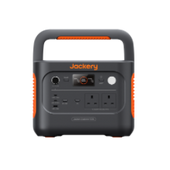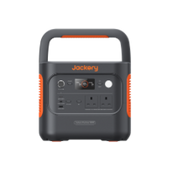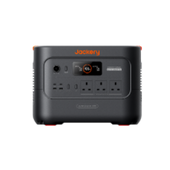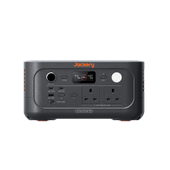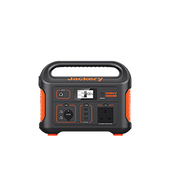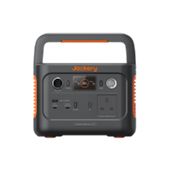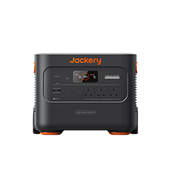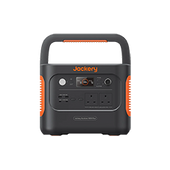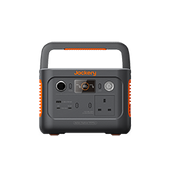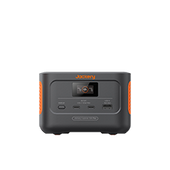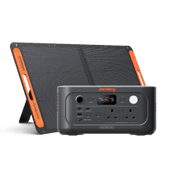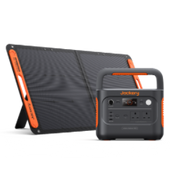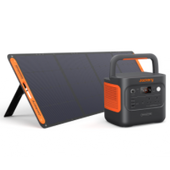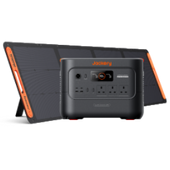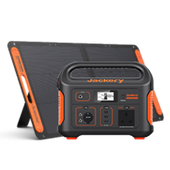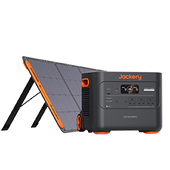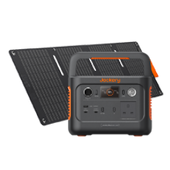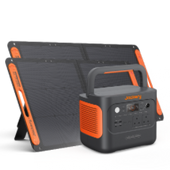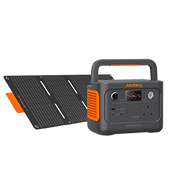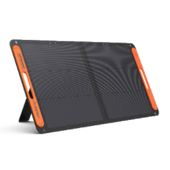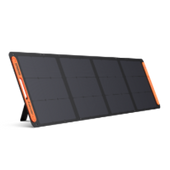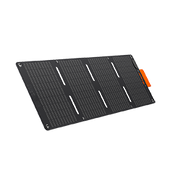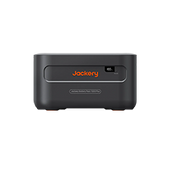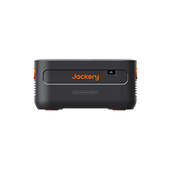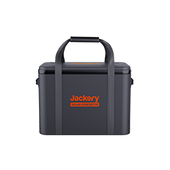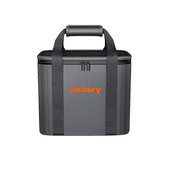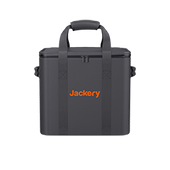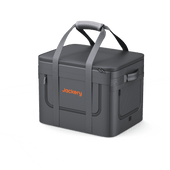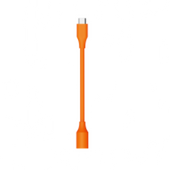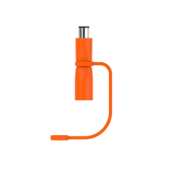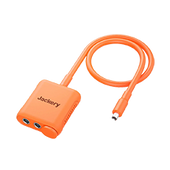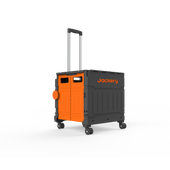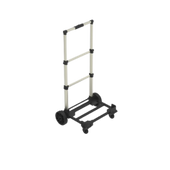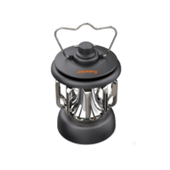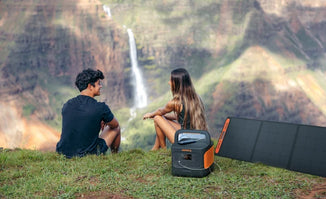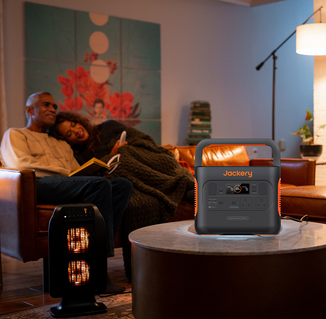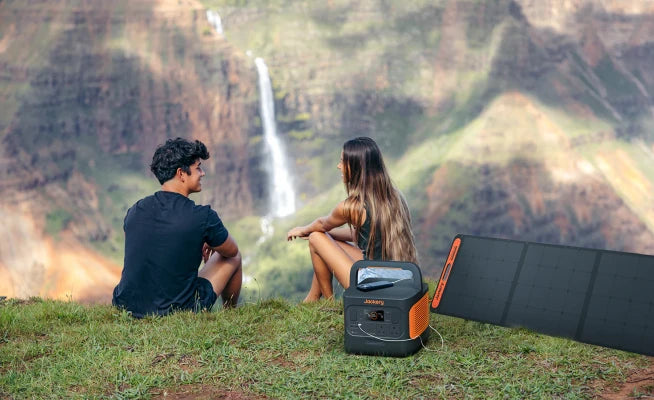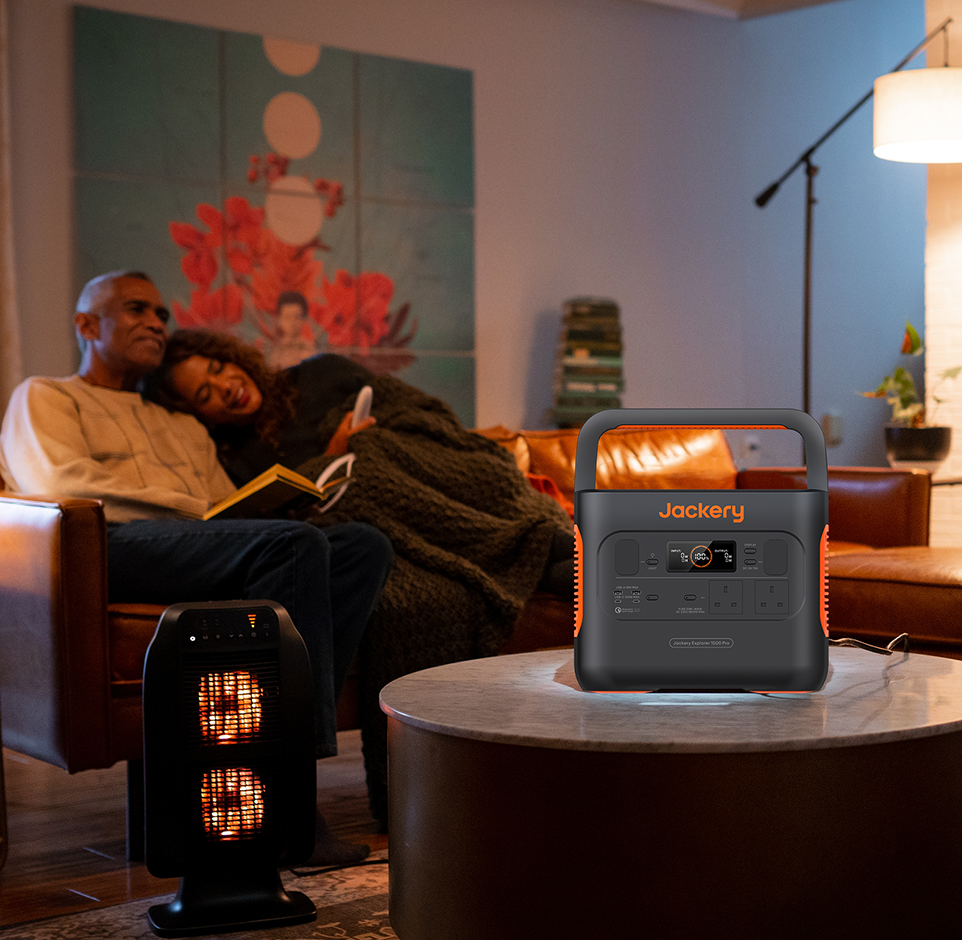2023 Buying Guide for Purchasing Portable Power Station
Are you exhausted from being left in the dark when the power goes out and looking for an eco-friendly solution to keep your essential devices running? That's where a portable power station helps you.

It utilizes PV cells to capture solar energy stored in a built-in battery. The inverter converts that energy into alternating current (AC power), powering all home appliances. A solar power plant reduces your carbon footprint while offering clean and sustainable energy.
The UK solar power market is quickly growing and is expected to grow at 5% CAGR by 2027 [1], according to Mordor Intelligence. So, if you're all set to buy a solar power station but don't know what to consider when purchasing one, don't worry; this portable power station buying guide will cover all. Before going into buying guide, let me highlight a few practical use cases of portable power stations.
Applications of Portable Power Stations
Portable power stations are versatile and efficient energy solutions that provide clean and renewable energy. These compact and lightweight systems offer numerous applications across various domains.
1. Outdoor Adventures and Camping
The global camping industry is still recovering from the COVID-19 shutdown. Even then, the UK has received more than 16.7 million caravanning and camping trips in 2022 alone. For outdoor enthusiasts and campers, a portable power station is ideal for those who want to keep in touch and power up during their trips.
Firstly, it can be used to charge electronic devices like smartphones, cameras, and GPS units while traveling to remote areas. Portable power stations can also power small appliances like portable stoves, fans, or lights, enhancing your overall camping experience.
2. Construction and Remote Job Sites
Construction sites and remote job sites often lack access to reliable electricity. Portable solar power stations can power tools, lighting systems, and other equipment, providing a convenient and eco-friendly solution.
Contractors and workers can rely on solar power stations to keep their tools charged and their job sites well-lit, enhancing productivity and reducing environmental impact and safety risks.
3. Emergency Backup
Portable solar power plants can help during crises like power outages, natural catastrophes, or other unforeseen occurrences. They offer a steady source of backup power for running medical equipment, lighting, communication devices, charging essential electronics, and more. They can also be kept in emergency kits, ensuring that you will have access to electricity when you need it most. These especially come in handy to me during maintenance activities by DNOs.
4. Remote Work and Digital Nomads
Access to a dependable power supply is becoming more crucial than ever with the growth of online work and the digital nomad lifestyle. Portable solar power stations make it possible as they provide a convenient and sustainable solution for individuals working remotely in outdoor or remote locations.
These power stations can charge laptops, power banks, Wi-Fi routers, and other necessary electronics. This enables digital nomads to work efficiently and stay connected without relying on traditional power outlets.
5. Events and Festivals
The United Kingdom has a culture of growth and community building, making events and festivals an integral part of society. In 2019, 1.4 million business events [2] were hosted in the UK, says Statista. The power supply is often a problematic issue for significant events held outdoors.
A portable power station can also provide electricity for outdoor events like concerts and festivals. Eradicating the need for loud generators, it offers noise pollution-free electricity for stage lighting, sound systems, food stands, and vendors' equipment. Moreover, using solar power stations can reduce your carbon footprint and help create a more sustainable and eco-friendly event environment.

Components of a Portable Power Station
A portable solar power station, commonly called a portable power bank, typically comprises several components that work together to produce electricity.
1. Battery
Every portable power station needs a battery since it stores electrical energy and powers all appliances. The battery capacity of a solar power station determines how much electricity it can generate. These power stations generally use lithium-ion batteries because of their small size, low weight, and long lifespan. In addition, they have a high energy density that helps users store more energy and power appliances for longer before depletion.
2. Inverter
An inverter's main job is to convert the DC stored in batteries into AC, which may be used to power various electrical products. Its unique features, like temperature protection, short circuit protection, overload protection, etc., make it efficient and adaptable.
So, all the connected devices stay protected, preventing damage from excessive loads, electrical faults, high temperatures, and low voltage conditions. In addition, the inverter lets you connect small appliances and other common AC gadgets, including laptops, lamps, fans, and devices, to the power station.
3. Charge Controller
The charge controller plays a crucial role in managing the flow of electricity in a portable power station. It primarily prevents the battery from becoming overcharged or over-discharged, as either condition could cause damage.
Furthermore, the charge controller contributes to extending the lifespan of a solar power station battery by maximizing and optimizing its usage. It does this by efficiently controlling the charging process and maximizing charging speed and efficiency.
4. Display and Controls
The majority of portable power units have a built-in display that indicates pertinent data, including battery life, input/output power, and operating status. The display screen can be either a traditional LED panel or a fancy LCD, providing a handful of information.
They also feature control buttons or knobs to operate and adjust various settings of the power station. These include turning the power station on/off, adjusting the output voltage, or selecting different charging modes.
5. DC and AC Outputs
A portable solar power plant typically has DC output ports, such as USB ports, 12V DC sockets, or car cigarette lighter-style sockets. These outputs allow direct power or charge devices that operate on DC power, such as smartphones, tablets, cameras, or car accessories.
It also comes with AC outputs that are standard electrical outlets found on the power station, similar to the ones in your home. These outlets allow it to plug in and power AC devices that require a standard wall outlet or car outlet, including laptops, small appliances, power tools, or lights.

Buying Guide for Portable Power Station
What are the best portable power stations? With a general understanding of solar power plant components, people can choose the power plant according to their needs, application scenarios, and components. Here is portable power station buying guide:
1. Battery Type
When buying a portable power station, initially, look at the battery type it houses. Lithium-ion, lithium-polymer, or lead-acid batteries are the most common battery types used in solar power stations.
Lithium-ion batteries are popular due to their high energy density and quick recharging capabilities. They charge three times faster than lead-acid batteries but are costly. For those on a budget, lithium-polymer or lead-acid batteries may be a more practical option. Despite being less energy-dense and bulky, they can still effectively power everyday appliances and are more affordable.
2. Battery Power Capacity
Another critical factor is the portable power station's power capacity or energy storage. So, pay keen attention to the measurement in watt-hours (Wh) or ampere-hours (Ah). To determine the appropriate capacity, assess the total power consumption of the gadgets you plan to charge or run on the power station.
Going for the highest power capacity battery is generally recommended, as it allows for more prolonged operation of my appliances. However, if you have budget constraints, you may opt for a solar power bank that can handle your virtual devices.
3. Inverter Type
The type of inverter a solar power plant has is another essential thing to consider when making a purchase. Generally, portable power stations have either a modified sine wave or pure sine wave inverters. The latter provides a cleaner and more stable power output, which is essential for sensitive electronics like laptops, medical devices, or certain appliances.
So, if you plan to power such devices, you should choose a power station with a pure sine wave inverter. However, a modified sine wave inverter is suitable if you are only using the portable solar power plant to run common appliances.
4. Weight and Portability
Portability is a significant factor, especially for people who want to carry the power station on outdoor adventures or during travel. This includes considering the overall size and dimensions, as well as additional accessories that are required when on the go. These accessories include power station cases, solar panels, or other items.
5. Output Ports
The number and types of output ports available on power stations are important considerations as well. Having versatile output ports provides flexibility in charging and powering my devices. This ensures that the solar power bank is compatible with various devices, from small electronics to larger appliances.
How Do You Maintain a Portable Power Station?
You should follow the given tips to make sure your solar power plant stays well-maintained:
● To ensure your solar panels work efficiently, keeping them clean is important. You can use a soft cloth or a light brush to clean them regularly.
● Check for any signs of damage, like cracks or loose connections, and fix them immediately.
● Don't exceed the power station's maximum output to prevent overloading. Check the power ratings of the devices you connect to ensure compatibility.
● Read and follow the manufacturer's instructions and guidelines for maintenance and usage of the specific portable solar power station model.
Universal Choice: Jackery Explorer 1000 Pro Portable Power Station

The Jackery Explorer 1000 Pro Portable Power Station is a game-changer that meets all your charging needs. With its impressive 1,002Wh capacity and output power of 1000W (2000W Surge Peak Power), it delivers quick and reliable charging like no other.
The remarkable charging speed of the Explorer 1000 Pro portable power station is one of my favorite features. When plugged into a wall outlet, it can be fully charged in just 1.8 hours, which means less waiting and more power on the go. It's a fantastic option for outdoor adventures.
The Explorer 1000 Pro portable power station excels when it comes to portability. It's really lightweight (just 25.4 lbs) and has a foldable handle, so people can bring it wherever they need to. Charging devices can sometimes be noisy and disruptive, but the Explorer 1000 Pro portable power station ensures a quiet operation, allowing me to enjoy a peaceful environment even during charging.
Equipped with dual 100W PD ports, this power station has become an essential companion for all your devices. Whether it's your phone, iPad, laptop, or even your drone, your can rely on the Explorer 1000 Pro portable power station to deliver steady and fast power.
Key Features:
- Ultra-Charging System: 1,002Wh capacity, 1000W output power (2000W Surge Peak Power)
- Fast Charging: Full wall charge in 1.8 hours, full solar charge with 4* SolarSaga 200W panels
- Portable Design: Lightweight at 25.4 lbs, foldable handle for easy on-the-go use
- Quiet Operation: 46dB noise level for super-quiet charging
- Clear Display: Smart screen display for crystal clear viewing
- Versatile Lighting: Three LED light modes (low, high, SOS) for outdoor use and emergencies
- Multiple Charging Methods: 2 AC ports, 2 USB-C ports, 1 USB A port, and a DC car port
- Safety Assurance: Pure sine wave inverter, international standards compliance, vehicle-grade BMS
- Fire Resistant: 94V-0 fire rating materials, adhesive structure on solar panels to prevent glass debris
- Long-lasting Performance: Supports up to 1000 charge cycles, low self-discharge rate for 365 days at 80% battery level
Conclusion
A solar power bank offers you electricity during power outages or when camping with friends and family. The electricity obtained through a solar power station is cleaner than that generated by fossil fuels and helps reduce your carbon footprint. To find out what are the best portable power stations, there are many factors you need to consider.
Although multiple solar power station options are available, Jackery Explorer 1000 Pro Solar Power Station is always an ideal choice. It's efficient with an ultra-charging system and has top-notch safety features that keep all your expensive devices safe.
Reference:
- https://www.mordorintelligence.com/industry-reports/united-kingdom-solar-power-market-industry
- https://www.statista.com/statistics/558074/business-event-market-volume-united-kingdom-uk/

